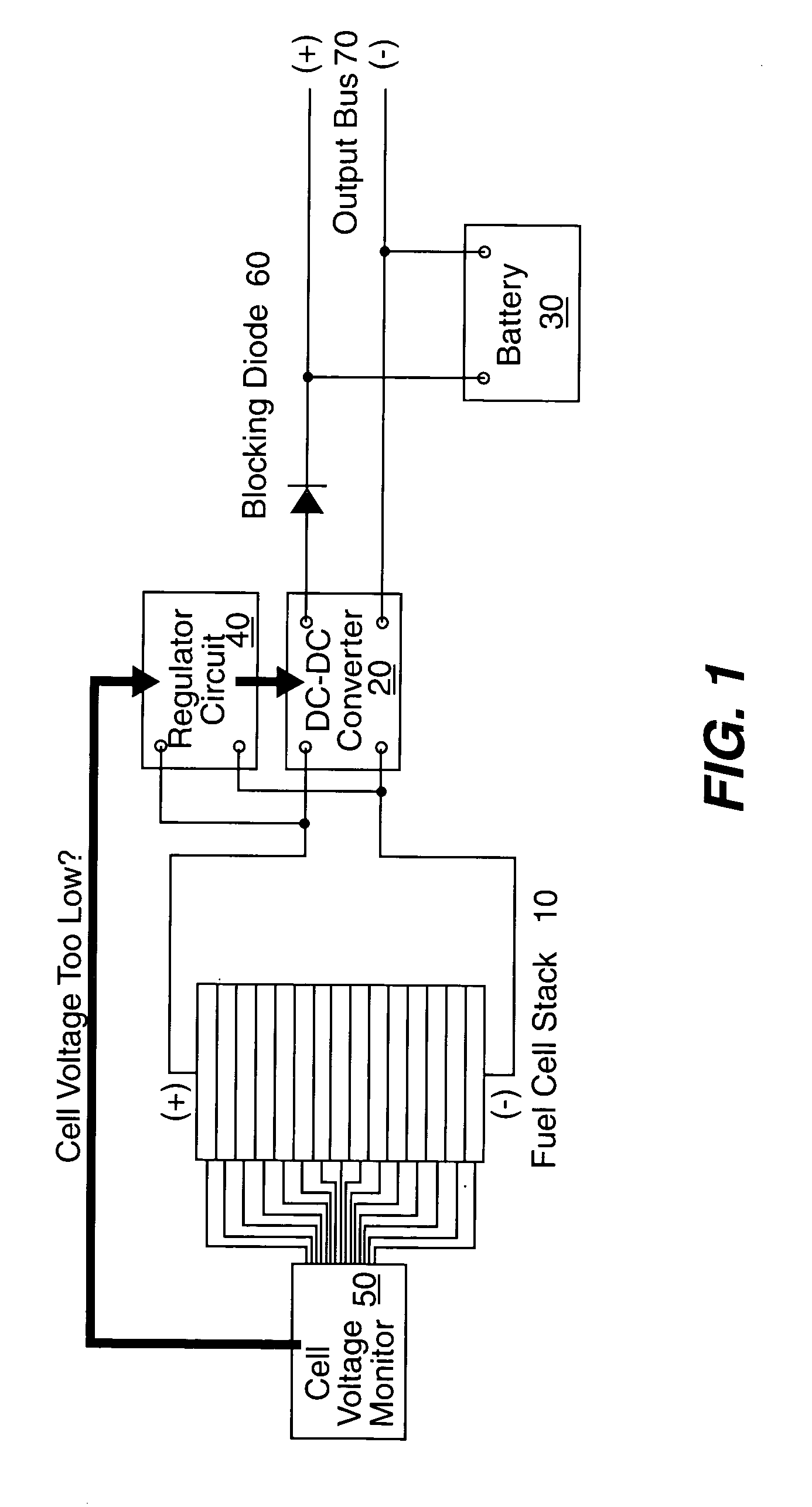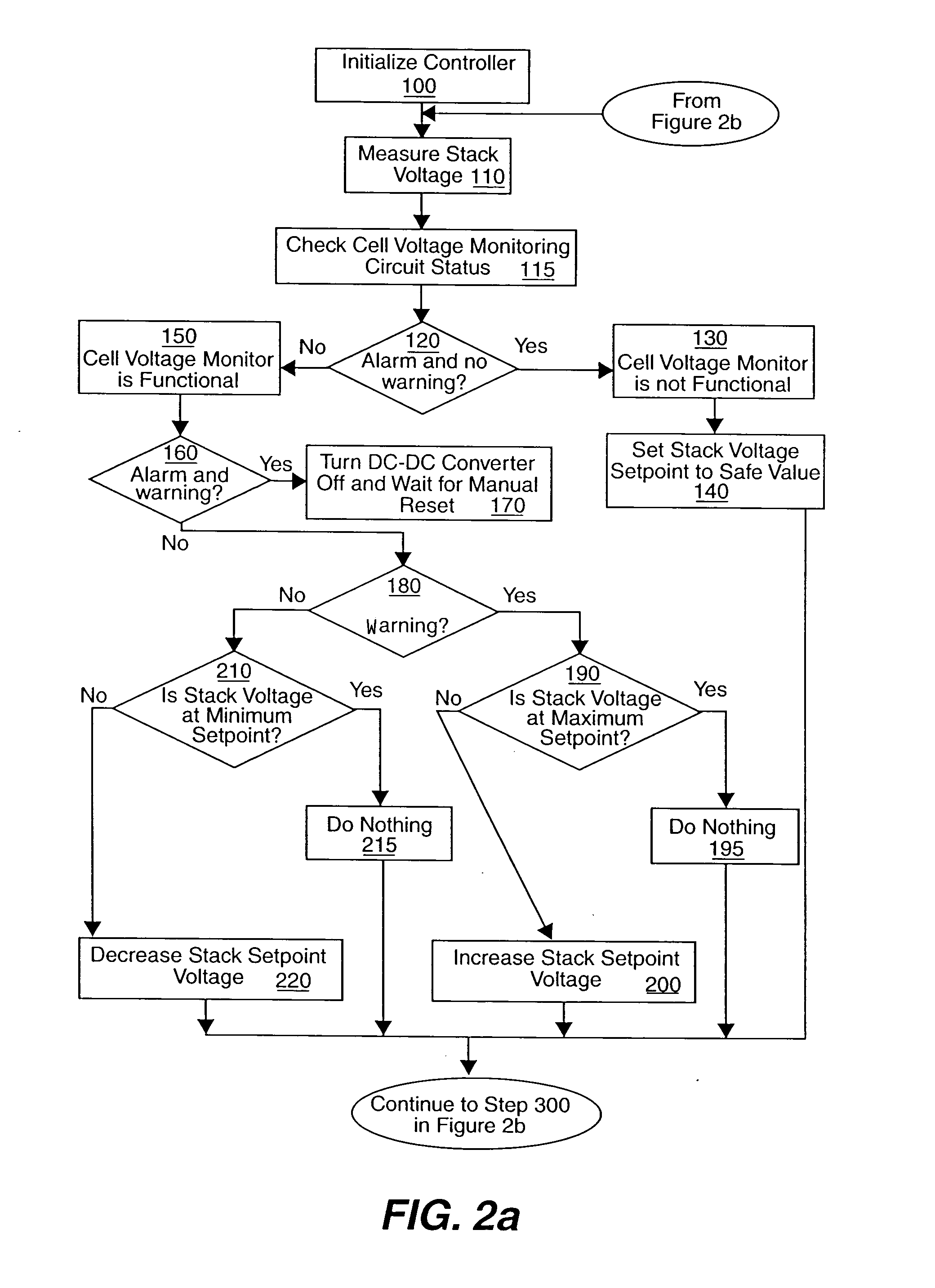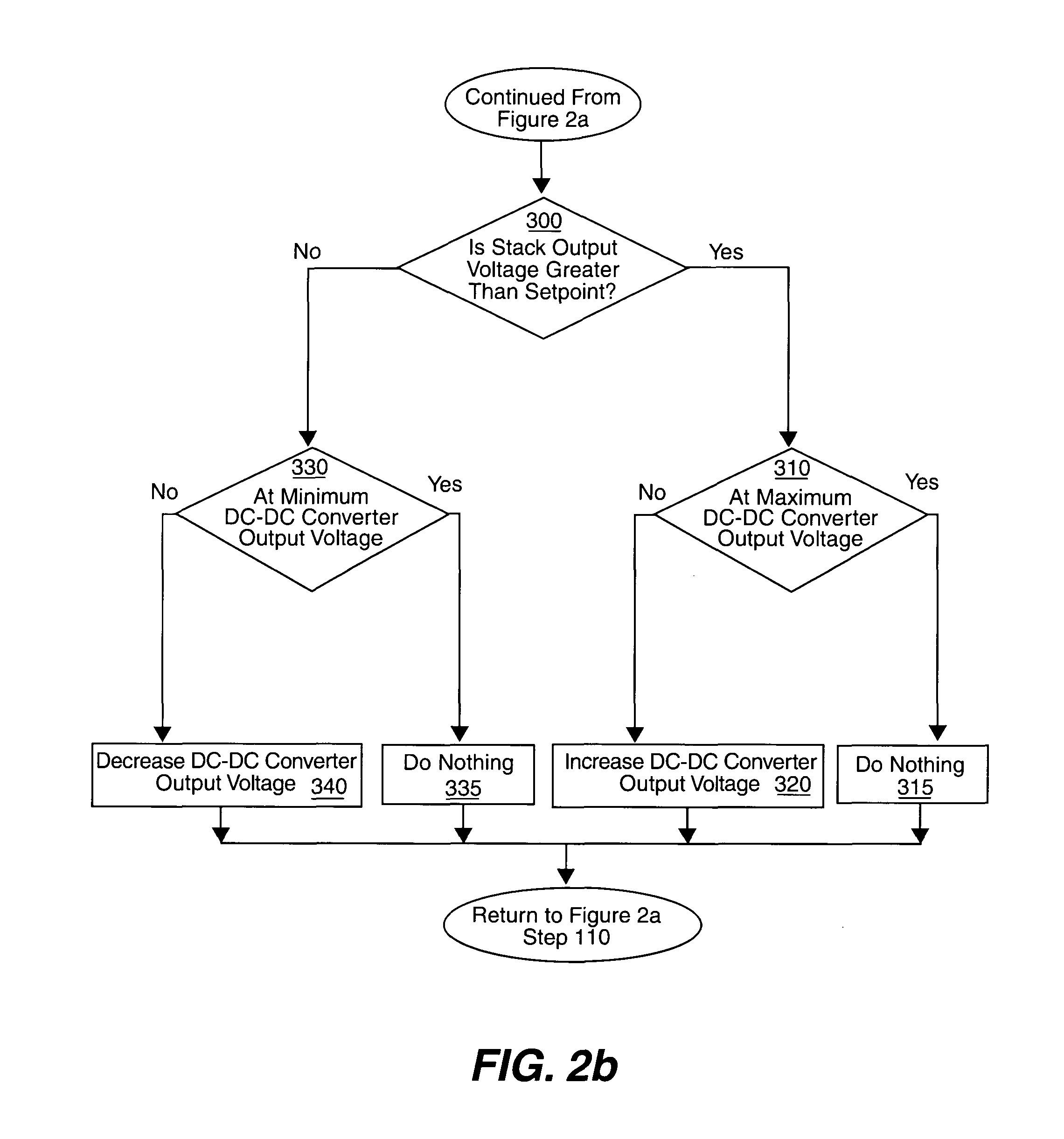Apparatus and method for regulating hybrid fuel cell power system output
a hybrid fuel cell and power system technology, applied in the direction of transportation fuel cell technology, electric hydrogen generators, transportation, etc., can solve the problems of reducing the power output of the battery, the connection of the fuel cell and the battery in parallel, and the reversal of the fuel cell
- Summary
- Abstract
- Description
- Claims
- Application Information
AI Technical Summary
Benefits of technology
Problems solved by technology
Method used
Image
Examples
example
[0090] The following operational example of the present invention refers back to the regulation algorithm explained in FIG. 2 by reference to the particular step numbers in parentheses.
[0091] Hybrid Fuel Cell System and Regulation Circuit Design
[0092] The regulation circuit was installed in a hybrid fuel cell power system used to power a three wheel personal mobility vehicle. The hybrid fuel cell power system replaced a 24 volt, 32 ampere-hour lead acid battery originally installed to drive the vehicle motor speed controller and other powered accessories. The hybrid fuel cell power system was designed with a fuel cell stack consisting of 40 individual cells, providing 150-160 watt maximum power output. The energy storage medium used was a 24 volt, 7.2 ampere-hour battery, mounted under the floorboard of the personal mobility vehicle.
[0093] The stack regulation and cell warning point was set to 0.6 volts per cell. The cell alarm value was set to 0.10 volts. The DC-DC converter use...
PUM
| Property | Measurement | Unit |
|---|---|---|
| input voltage | aaaaa | aaaaa |
| input voltage | aaaaa | aaaaa |
| voltage | aaaaa | aaaaa |
Abstract
Description
Claims
Application Information
 Login to View More
Login to View More - R&D
- Intellectual Property
- Life Sciences
- Materials
- Tech Scout
- Unparalleled Data Quality
- Higher Quality Content
- 60% Fewer Hallucinations
Browse by: Latest US Patents, China's latest patents, Technical Efficacy Thesaurus, Application Domain, Technology Topic, Popular Technical Reports.
© 2025 PatSnap. All rights reserved.Legal|Privacy policy|Modern Slavery Act Transparency Statement|Sitemap|About US| Contact US: help@patsnap.com



